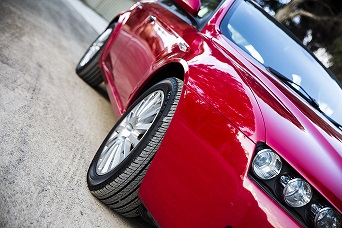 Some experiences are so humiliating that you never forget them. Walking into a car showroom with my husband was one such experience. We sat down in front of the desk and the salesman opposite asked my husband about the car that we wanted to buy for me. I was completely ignored. I’m sure he didn’t ask “are you looking for a little run-about for the wife?” but that was certainly implied. Recent award-winning research from Haymarket Consumer Media has shed new light on the way consumers actually go about making the decision and purchasing a new car - and its complex, very complex.
Some experiences are so humiliating that you never forget them. Walking into a car showroom with my husband was one such experience. We sat down in front of the desk and the salesman opposite asked my husband about the car that we wanted to buy for me. I was completely ignored. I’m sure he didn’t ask “are you looking for a little run-about for the wife?” but that was certainly implied. Recent award-winning research from Haymarket Consumer Media has shed new light on the way consumers actually go about making the decision and purchasing a new car - and its complex, very complex.
Traditionally marketing in the motor industry has been built around a number of assumptions. Thankfully, nowadays, the assumption that all decision-makers must be male has gone. However, another, dangerous assumption persisted - that buyers behave logically, choosing cars from a small defined segment, working their way through detailed technical information to finally shortlist with the car the best mix of features or benefits. The reality, as this research shows, is very different. Many of us might secretly hanker for an open top convertible sports car, or a swanky 4x4 but we end up with a supermini or an MPV because we need to balance complicated demands including personal self-image, family life and the reality of the budget.
This study involved people who made an initial decision to buy a car and they were closely followed over a period of up to six months. Smartphone apps were used to track the process and subjects were asked to message the research company whenever did anything about car buying or whenever they saw or heard anything about cars. This methodology, which the researchers call ethnography, differs from conventional market research in that the primary task is to identify what people actually do and then to go on to capture the reasons that they give for doing it. The process provided very rich feedback with an average of 110 reports back from each buyer and up to 12 messages per day.
The results challenged the conventional thinking about the process of the logical purchase funnel, and validated more a complicated behavioural economics theory.
The main findings were:
- The complexity, detail and length of the search process meant it was often difficult to recall all the touches accurately
- On average there were 14 cars on a shortlist but in some cases the list exceeded 50. The number of cars on the shortlist first grows and includes cards from different cross segments e.g. family, sports car, 4x4, and then it starts to decline
- Buyers create a context for the recall of the decision process, i.e. while we don’t consciously choose to edit our recall, we are much more likely to remember any instance or any evidence that fits how we think we made the choice
- The researchers identified three different buyer types in this market. These are the benefit maximiser (38%), the speedy chooser (32%) and the car enthusiast (30%).
- Test drives are key, with buyers using them late in the process often using the test drive as a means of finally confirming their choice. If a test drive couldn’t be provided the car was nearly always taken off the list.
- Buyers are good at estimating their budget, but underestimate the amount of time it will take and how complicated it is going to be
- Buyers are not as diligent, certainly in the number of test drives they do, as they estimate at the outset
- Buyers are not as influenced by the overall deal as they expected to be the outset but they are more influenced by advertising than they would care to admit.
One more interesting observation. Buyers who make the process too complicated for themselves often revert back to the brand or type that they know, in other words they are risk averse to making a change.
What intrigued me as a marketer was the confirmation of my belief in the complex nature of decision-making. What’s challenged me (and this will be shared with my customers) is how to cope with that complexity and meet the needs of each individual buyer involved in a decision, particularly if that that is decision involves moving away from an existing supplier.
So, 2 questions
1. How well do you really understand your buying process?
2. What would change for your business if you did?
Gill
You can buy the research paper from https://www.esomar.org/web/research_papers/Ethnographic-Research_2385_Ho...
